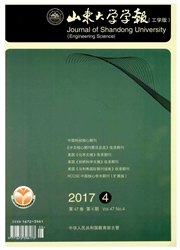

 中文摘要:
中文摘要:
密频结构在工程中广泛存在,但是如何判断其频率密集度却没有统一的标准,针对这种情况,采用摄动方法分析了一个两自由度受控结构,表明在速度反馈下结构受脉冲荷载作用的最优反馈增益即为频率密集度参数,具有较小模态阻尼比的模态的所能达到的最大阻尼也是频率密集度参数,在状态反馈的时候具有较小模态阻尼比的模态的所能达到的最大阻尼也是频率密集度参数的√3倍,说明了受控结构的附加模态阻尼与频率密集度参数具有密切的联系.在综述了已有研究的基础上,提出了新的密集频率判别标准,兼顾了密集频率组内外的频率间隔,采用的密集频率判别指标具有明确的物理意义。
 英文摘要:
英文摘要:
Structures with closely spaced natural frequencies exist widely, while the judging criterion of the density of closely spaced frequencies is in dispute. A judging criterion for structures with closely spaced natural frequencies based on the analysis on a controlled two-degree-of-freedom structure was suggested. The perturbation method was applied in the analysis and the results were verified by numerical simulations. It was shown that the optimal control gain of the two-degree-of-freedom structure with velocity feedback was dependent on the frequency density of the structure, which was quantatively equal to the maximum additional mode damping ratio of the structural mode with higher frequency. When using state feedback, the maximum attainable additional mode damping ratio is √3 times the frequency density parameter. The results indicated that the frequencies density parameter was closely related to the optimal modal damping ratio of the structure. Based on a brief review of previous research, a judging criterion related the minimum frequency density parameter and the required mode damping ratio were proposed, which has a clear physical meaning.
 同期刊论文项目
同期刊论文项目
 同项目期刊论文
同项目期刊论文
 期刊信息
期刊信息
